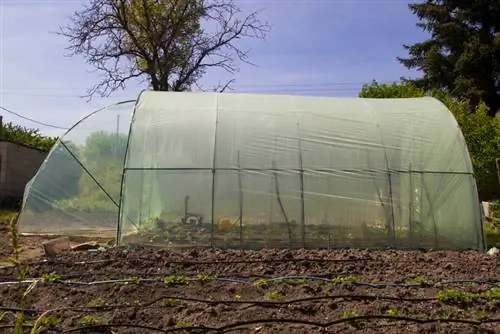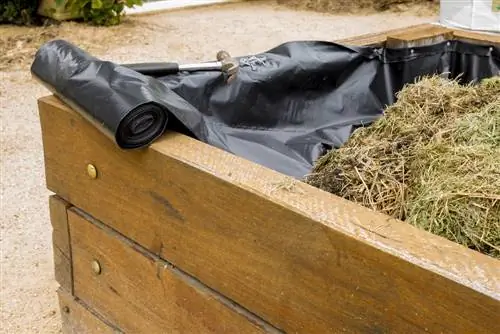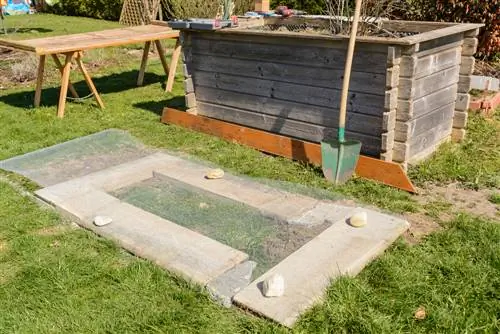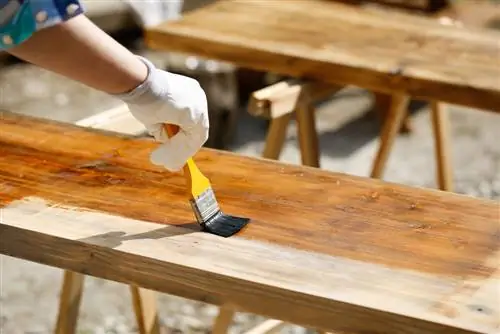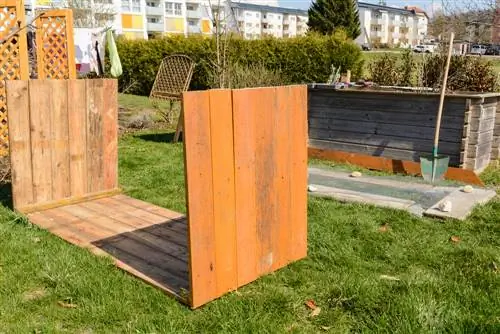- Author admin [email protected].
- Public 2023-12-16 16:46.
- Last modified 2025-01-23 11:21.
Not every raised bed needs a concrete foundation - as a rule, a solid and level surface is completely sufficient. However, if the raised bed is to be built in brick (regardless of whether it is a drywall or mortared wall), a solid concrete foundation is essential for safety reasons.
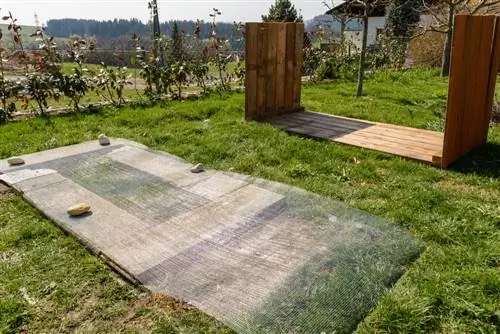
Does a raised bed need a foundation?
A raised bed does not always need a concrete foundation. A firm, level surface is often sufficient. However, a concrete foundation is recommended for brick raised beds. To keep voles and weeds away, you should lay wire mesh or bricks and provide drainage.
Subsoil must always be firm and level
The substrate must provide a raised bed - regardless of whether it is made of wood, metal or stone - with sufficient stability, but should still be sufficiently permeable - this is to avoid waterlogging in the bed. Especially in newly created gardens, where fresh topsoil has often been added, the subsoil must first be compacted. This can be done with a vibrating tamper (€299.00 at Amazon) from the hardware store or by hand. However, if the ground has grown, you can create a level by digging a shallow pit. Make sure that there are no thick tree roots stretching across this area - these could endanger the stability. If in doubt (and if the roots cannot be removed), it is better to choose another location.
Protection from voles etc
Of course, the raised bed is not placed on the bare ground. Here, annoying rodents such as voles can work their way into the raised bed and cause considerable damage. To prevent this, you should lay rabbit or chick wire between the ground and the raised bed box. Cover the wire with a thin layer of grit or sand and, if necessary, lay a weed fleece over it - this is particularly useful if the soil is riddled with stubborn root weeds. Instead of the fine-meshed wire, you can also lay perforated bricks, although there should be no large gaps between the bricks.
Concrete foundation for stone raised beds
A raised bed will of course be more stable if you place it on a concrete foundation. Such a base is particularly useful for heavy raised beds made of stone to ensure stability. But wooden raised beds can also be stabilized using a point foundation. Only the cornerstones are in a concrete foundation. However, if your raised bed needs a proper foundation, you will have to ensure that the excess water drains out of the raised bed in another way - in this case, the bed walls should have sufficient drainage options, otherwise the plants will suffer from the accumulated water. Such drainage options arise, for example, through holes in the stone wall (this can be achieved very well with dry stone walls!) or artificial drainage, for example through drain pipes led to the outside.
Tip
A layer of pebbles placed between the ground and the raised bed box not only protects against rodents and weeds, but also serves as drainage.


